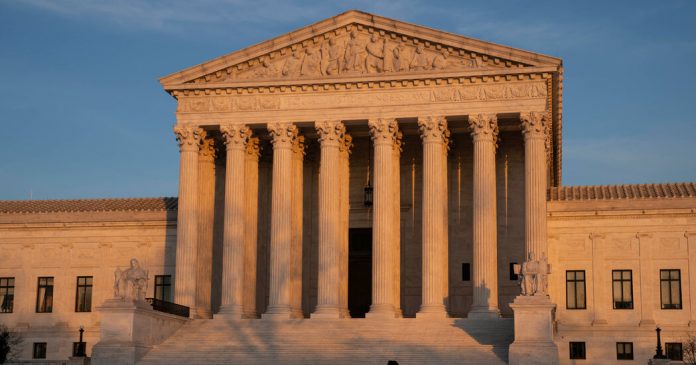In a separate dissent, Justice Elena Kagan said the majority had gone badly astray.
“It does a disservice to the district court, which meticulously applied this court’s longstanding voting-rights precedent,” she wrote. “And most of all, it does a disservice to Black Alabamians who under that precedent have had their electoral power diminished — in violation of a law this court once knew to buttress all of American democracy.”
Justices Stephen G. Breyer and Sonia Sotomayor joined Justice Kagan’s dissent.
In earlier decisions, the Supreme Court effectively gutted Section 5 of the law, which had required federal approval of changes to state and local voting laws in parts of the country with a history of racial discrimination, and cut back on Section 2 of the law, limiting the ability of minority groups to challenge voting restrictions.
The Alabama case also concerns Section 2, but in the context of redistricting.
Section 2 bars any voting procedure that “results in a denial or abridgment of the right of any citizen of the United States to vote on account of race.” That happens, the provision goes on, when, “based on the totality of circumstances,” racial minorities “have less opportunity than other members of the electorate to participate in the political process and to elect representatives of their choice.”
In November, Alabama’s Legislature, which is controlled by Republicans, redrew the state’s seven-district congressional map to take account of the 2020 census. It maintained a single district in which Black voters make up a majority.
That district has long elected a Democrat, while the state’s other six districts are represented by Republicans.
After the map was challenged by Black voters and advocacy groups, a unanimous three-judge panel of the Federal District Court in Birmingham ruled last month that the Legislature should have fashioned a second district “in which Black voters either comprise a voting-age majority or something quite close to it.”
How U.S. Redistricting Works
Card 1 of 8
What is redistricting? It’s the redrawing of the boundaries of congressional and state legislative districts. It happens every 10 years, after the census, to reflect changes in population.
How does it work? The census dictates how many seats in Congress each state will get. Mapmakers then work to ensure that a state’s districts all have roughly the same number of residents, to ensure equal representation in the House.
Who draws the new maps? Each state has its own process. Eleven states leave the mapmaking to an outside panel. But most — 39 states — have state lawmakers draw the new maps for Congress.
If state legislators can draw their own districts, won’t they be biased? Yes. Partisan mapmakers often move district lines — subtly or egregiously — to cluster voters in a way that advances a political goal. This is called gerrymandering.
Is gerrymandering legal? Yes and no. In 2019, the Supreme Court ruled that the federal courts have no role to play in blocking partisan gerrymanders. However, the court left intact parts of the Voting Rights Act that prohibit racial or ethnic gerrymandering.
The unsigned decision was joined by Judge Stanley Marcus, who ordinarily sits on the U.S. Court of Appeals for the 11th Circuit, in Atlanta, and was appointed by President Bill Clinton; and by Judges Anna M. Manasco and Terry F. Moorer, both appointed by President Donald J. Trump.
